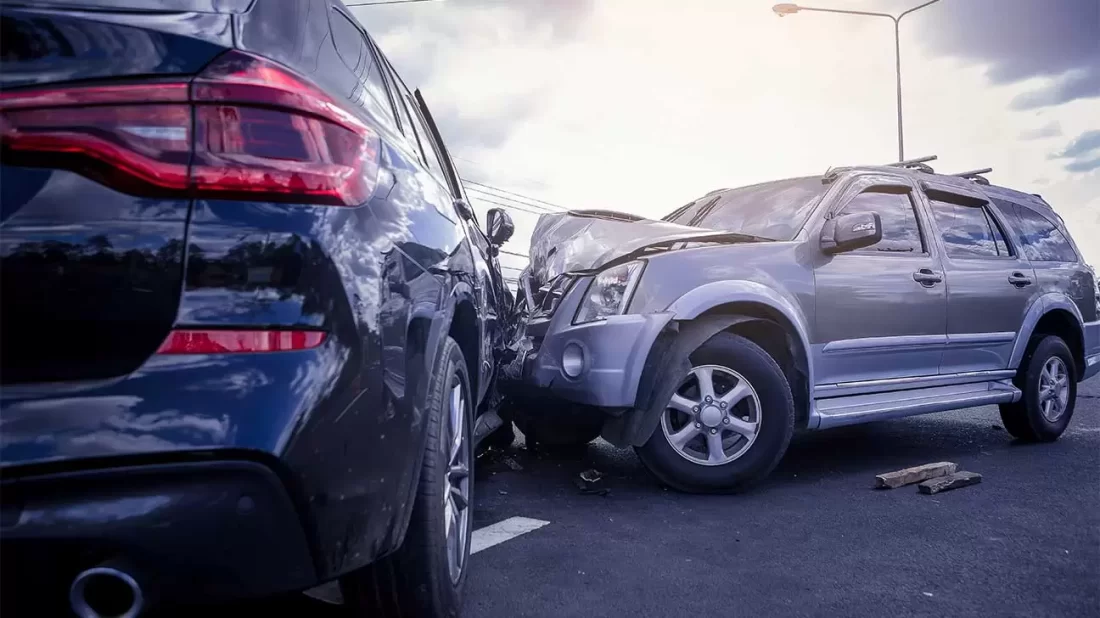
Everything is going just fine until your vehicle is suddenly hit from behind. The jolt of the collision alone is enough to leave your head spinning. Once you figure out what just happened, frustration and annoyance usually set in. Yep, you’ve just been in a rear-end car collision.
While the common causes of rear-end vehicle collisions vary, something pretty much stays the same. You’re wondering who’s responsible for covering your damages. Hopefully, it’s not you.
Common Causes of Rear-End Collisions
You’re probably already aware of the common causes of rear-end accidents. The causes are covered in driver’s education classes. Some auto insurance carriers also include the causes in their safe driving literature.
The National Highway Traffic Safety Administration (NHTSA) monitors rear-end collisions across the U.S., including Oklahoma, and states the three common reasons a vehicle collides into the rear of another are:
- Distracted driving
- Tailgating (following too closely behind the lead vehicle)
- Driving while fatigued or impaired
Other factors that can result in a rear-end wreck also include mechanical failure. The brakes may not be working properly causing a vehicle to hit another car. Weather can also play a role in this type of vehicle accident. For example, fog or heavy rain can make it difficult to see if any cars are in front.
Who’s Responsible for a Rear-End Collision?
Sometimes, determining blame in a rear-end collision is relatively easy. For example, the weather is great, there’s plenty of visibility, and your vehicle is rear-ended by a driver following too closely behind.
Oklahoma follows comparative negligence guidelines, and this can get a little confusing. If you’re not sure what comparative negligence is, the premise is fairly simple. The standard allows more than one individual to be assigned blame for an accident. This means the defendant may also be able to recover some of their damages, even if they’re partially responsible for the rear-end collision.
However, if your rear-end collision is caused by tailgating, distracted, tired, or intoxicated driving, your case almost always meets Oklahoma standards of proving negligence. In this instance, comparative negligence isn’t something you need to worry about.
When is the Trailing Driver Not Responsible For a Rear-End Collision?
Imagining a scenario where the trailing driver isn’t responsible for a rear-end collision can be difficult. However, sometimes the collision is the fault of the lead car’s driver. This can be when comparative negligence comes into play.
Remember, comparative negligence allows more than one individual to take the blame for an accident. So, when may the lead driver be at least partially at fault?
Brake Lights are Missing or Broken
Brake lights are an important safety feature on a vehicle and you can receive a traffic citation if yours are broken or missing. Your brake lights alert drivers behind you that you’re slowing down or coming to a complete stop.
Since it’s difficult to judge a vehicle’s changing rate of speed with a glance, brake lights give a visual warning. If you fail to repair your brake lights, comparative negligence may apply.
Suddenly Reversing or Stopping
Yes, your brake lights give some warning your vehicle is stopping or reversing. However, brake lights are only a warning to give trailing drivers time to slow down. If you suddenly slam on your brakes, rear drivers may not have time to stop. This also applies if you throw your car into reverse without any warning. Not only is this hard on your transmission but it can also result in a rear-end collision.
While reversing when vehicles are behind you is often considered a form of negligence, it’s a little different when it comes to braking suddenly. You can argue if the trailing driver wasn’t following so closely the accident wouldn’t have occurred. However, the court can also find you’re partially responsible. Bringing in an accident reconstruction expert may be necessary to help prove your claim.
Multi-Vehicle Accidents
A multi-vehicle accident occurs when more than two cars are involved in an accident. Think of it as a chain reaction.
One vehicle rear ends another and it continues down the line. This type of collision often happens on busy roads and freeways when there’s not a lot of space between vehicles. This means drivers don’t have a lot of time to react if a lead vehicle comes to a sudden stop. Sometimes, even slowing down can result in a multi-vehicle accident.
Determining liability in this type of rear-end crash is often a complex process. Authorities typically need to gather evidence that can include video footage. Witness statements can also be helpful. However, often more than one driver is found to be responsible for the accident. When this happens, comparative negligence may benefit your injury and damage claim.
For example, you may be partially responsible for the accident but under comparative negligence, you can still receive compensation for some of your expenses relating to the collision.
What to Do After Being Involved in a Rear-End Collision
Regardless of who’s to blame for a rear-end collision, it’s best to always file both an accident and a police report. The two reports are different and your insurance company is probably going to want copies of both.
You do have a bit of time to file an Oklahoma car accident report with the police. The Sooner State gives you an astonishing 6 months to report a traffic accident. If you’re wondering if it’s legal to leave the scene of an accident, the answer is occasionally yes.
However, if injuries or a fatality occurs you’re legally required to remain on scene until the authorities arrive. You must also call the authorities if the vehicle or any other property damage exceeds $2,500. Your next step should be to contact an accident attorney specializing in rear-end collisions.
Protect Your Legal Rights After a Rear-End Collision
Determining blame in a rear-end collision isn’t always easy. Adding to the confusion is Oklahoma’s comparative negligence rule. To help ensure you don’t assume more of the blame than necessary, it’s best to work with an experienced OKC accident attorney.


